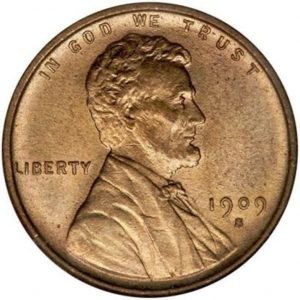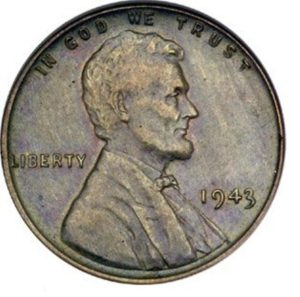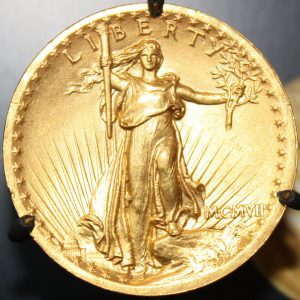 Coin collectors should take time to learn a few tips on how to detect and protect themselves from buying counterfeit or altered coins.
Coin collectors should take time to learn a few tips on how to detect and protect themselves from buying counterfeit or altered coins.
The demand for rare coins has not only raised the value of collectible coins but has also created a rise in the number of counterfeit coins coming into the market. Coin collectors need to be aware of a few tips that suggest a coin may not be authentic. Knowing sensitive areas to inspect or defects which occur during the process of counterfeiting may alert collectors to a fake and keep them from making a costly mistake.
Inspect Mintmarks on Coins
A common counterfeit coin is a 1909-S VDB Lincoln cent and illustrates the importance of inspecting mintmarks. Because only 484,000 of these particular Lincoln cents were minted at the San Francisco mint compared to over 27 million from the Philadelphia mint, coins marked with the S (indicating the San Francisco mint) are more valuable. For example, listed in the 2011 U.S. Coin Digest a 1909 VBD-S cent with a MS-65 grade is valued at 6,850 dollars. The same coin from the Philadelphia mint would only fetch around 200 hundred dollars.
This large difference in price attracts the attention of counterfeiters. To create a VBD-S penny, a forger only needs to apply the letter S to a 1909 VBD cent minted from Philadelphia since those coins do not have mintmarks. Although there are many ways an S can be added they are not perfect. Upon careful inspection of the mintmark, defects in shape, size, slant, or style can be noticed. If coin collectors are not aware of this common practice of adding S mintmarks to not only VBD cents but also to other coins, they could purchase a false San Francisco mint coin.
Inspect Dates on Coins
 Another example concerning a Lincoln cent and a common counterfeit tactic involves the 1943 copper cent. The inspection of the date is important in this instance. A 1943 copper penny is worth far more than other copper pennies dated from other years. Full details about why a 1943 copper penny is extremely rare and valuable can be found here. Because the date is what matters on this collectible penny, counterfeiters are always trying to change dates to try and create it. For example, inspecting the date may reveal a 1943 penny was originally a 1948 penny. Grinding off the sides of an 8 will make it look like a 3. A collector who is aware of this devious technique will immediately be able to recognize a fraud. The tail of a genuine 3 extends lower than the 4 before it. The fake 3, made from an 8, will not.
Another example concerning a Lincoln cent and a common counterfeit tactic involves the 1943 copper cent. The inspection of the date is important in this instance. A 1943 copper penny is worth far more than other copper pennies dated from other years. Full details about why a 1943 copper penny is extremely rare and valuable can be found here. Because the date is what matters on this collectible penny, counterfeiters are always trying to change dates to try and create it. For example, inspecting the date may reveal a 1943 penny was originally a 1948 penny. Grinding off the sides of an 8 will make it look like a 3. A collector who is aware of this devious technique will immediately be able to recognize a fraud. The tail of a genuine 3 extends lower than the 4 before it. The fake 3, made from an 8, will not.
Inspect Edges and Appearance of Coins
There are many other coins which have been altered to deceive buyers similar to the examples above. Becoming aware of possible add-ons or changes to authentic previously minted coins will help a collector to be alert for others.
There are also counterfeit coins which are entirely false. They can be either a cast counterfeit or die-struck. Cast coins are easier to detect. Looking closely at the edges may reveal a seam or the overall appearance of the counterfeit coin may be inconsistent with other genuine minted coins. Knowing what genuine coins look like will often help determine a fake. An experienced collector looking at a fake may know it just doesn’t seem right.
Fake coins may have a greasy feel to them or be missing the sharp clearly defined details which are found in originals. They may also have small bumps or cavities on their surfaces from air bubbles being trapped during the casting process. If a coin seems fine in appearance, it still would be wise for a collector to check the weight and diameter of coin. All minted coins have specific weights and measurements to compare with.
Buying Coins from Trustworthy Dealers
 Even the most knowledgeable coin collector may still be fooled. Professional forgers are extremely good at what they do and are creating die-struck coins which mimic the actual process of genuine minted coins. False coins created by this process are harder to distinguish. One of the most famous die-struck counterfeits is the 1907 High-Relief Saint-Gaudens double eagle. If it wasn’t for the maker leaving his mark on the coin, it may have passed for an authentic gold coin.
Even the most knowledgeable coin collector may still be fooled. Professional forgers are extremely good at what they do and are creating die-struck coins which mimic the actual process of genuine minted coins. False coins created by this process are harder to distinguish. One of the most famous die-struck counterfeits is the 1907 High-Relief Saint-Gaudens double eagle. If it wasn’t for the maker leaving his mark on the coin, it may have passed for an authentic gold coin.
A collector’s best defense from buying these expensive false coins is to buy from reputable, trustworthy, and experienced dealers. Coin collecting is a hobby which has shifted from mere collecting to serious investing for some. This shift has given rise to more and more counterfeit coins being produced and sold because of the potential profit gained. As values on coins continue to increase coin collectors need to be aware of the possible frauds and the methods used in order to better protect themselves.


Thanks Jenny. Always enjoy your posts!
Very cool, thanks 🙂
Does anyone know… what the deal would be with one of the newer gold-coated dollars missing the gold, yet being in the top half of Mint-Struck quality?